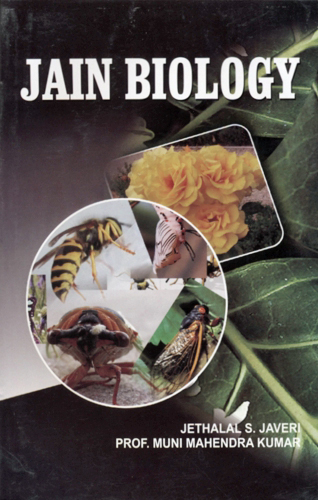The author of Sūtrakṛtāṅga, Arya Sudharma, has, however, adopted a special stle, quite different from other Sūtras. While an ascending order is adopted in the other scriptures, this Sūtra starts with the vegetable kingdom. Plants are divided into twelve categories on the basis of their place of origin and the way they obtain their nourishment and devotes as many-as 43 paragraphs of the chapter[1] for describing them.
- Trees which grow from earth - Pṛthviyonika Vṛkṣa
- Trees which grow from 1. (supra) - Vṛkṣayonika adhyāroha Vṛkṣa
- Trees which grow from water - Udakyonika Vṛkṣa
- Trees which grow from 3. (supra) - Udakayonika adhyāroha Vṛkṣa
- Grasses which grow from earth - Pṛthviyonika tṛṇa
- Trees which grow from water - Udakayonika tṛṇa
- Herbs which grow from earth - Pṛthviyonika auṣadhi
- Herbs which grow from water - Udakayonika auṣadhi
- Shrubs which grow from earth - Pṛthviyonika harita
- Shrubs which grow from water— Udakayonika harita
- Kuhaṇa which grow from earth - Pṛthviyonika kuhaṇa (plants which cause the earth to burst, e.g. mushrooms)
- Kuhaṇa which grow from water - Udakayonika kuhaṇa
Four salient features of each of the above types of plants are described in detail:
- The location from which the trees originate, obtain their nourishment and are supported. Trees grow either from earth, or water (aquatic plants) or from other trees.
- The nature of nourishment; bodies of all types of immobile organisms—earth-bodied, water-bodied and so on; While the earth-based trees get the nourishment through earth, creepers obtain it from the trees on which they grow and water-based trees get it through water.
- After growing and maturing, the plants obtain the nutrient! from the bodies of the mobile organisms also. They digest and assimilate the nutrient juices from the dead bodies of various mobile organisms,
- Various parts of the plants—leaves, flowers, fruits, etc. an possessed of various colours, smells, tastes, etc.
After dealing with plants, the mobile organisms (Trasakāya), have been dealt with from para 44.[2] Instead of classifying them in the conventional way, i.e., those possessing two sense-organs and so on, they are associated with different kinds of plants which were dealt with in the preceding paragraphs. Thus we have:
Mobile Beings which arc born on trees growing from the earth, trees growing from the trees, from the roots and other parts of the trees, creepers born on trees, creepers born on creepers, from roots etc. from grasses, from herbs, from shrubs, from kuhaṇa (aya, kayala etc.) etc., born in earth; then from trees born in water and all the above classes of plant growing from water (instead of earth). These mobile organisms obtain their nourishment from their hosts (all varieties are repeated).
In para 76, the human beings have been dealt with. Here is described the process of reproduction of human beings with many details - fertilization of the seed, conception, pre-natal development of the fetus, birth and growth after birth.
After the humans, it is the turn of the sub-human animals which possess five sense-organs and aquatic and terrestrial animals and birds are dealt with in pp. 77-81.
Now comes the turn of two-, three-, and four-sensed organisms and they are dealt with in pp.82-84. And in the end come the remaining four Sthāvaras:
- Water-bodied organisms pp.85 to 88
- Fire-bodied organisms pp.89 to 92
- Air-bodied organisms pp.93 to 96
- Earth-bodied organisms pp-97 to 100
Thus, it can be seen that the sequence followed in Sūtrakṛtāṅga is entirely different from the other two scriptures. As regards the question, why the plants, the vegetable kingdom, which is number five in the sthāvaras category, have been dealt with first, both Curṇikāra and Vṛttikāra have stated as under:
Development of consciousness in the organisms of the vegetable kingdom is highest amongst the five sthāvaras and practically everyone accepts the plants as animate objects because their animation is so obvious. On the other hand, the animation of the other sthāvaras is difficult to prove and be accepted by the people.
It could be noted that there is no mention either of the denizens of hell or those of heaven in this chapter.
Let us now see, in greater details, how each scripture has treated the subject of Biology and also compare this scriptural treatment with the scientific views.
 Jethalal S. Zaveri
Jethalal S. Zaveri
 Prof. Muni Mahendra Kumar
Prof. Muni Mahendra Kumar

